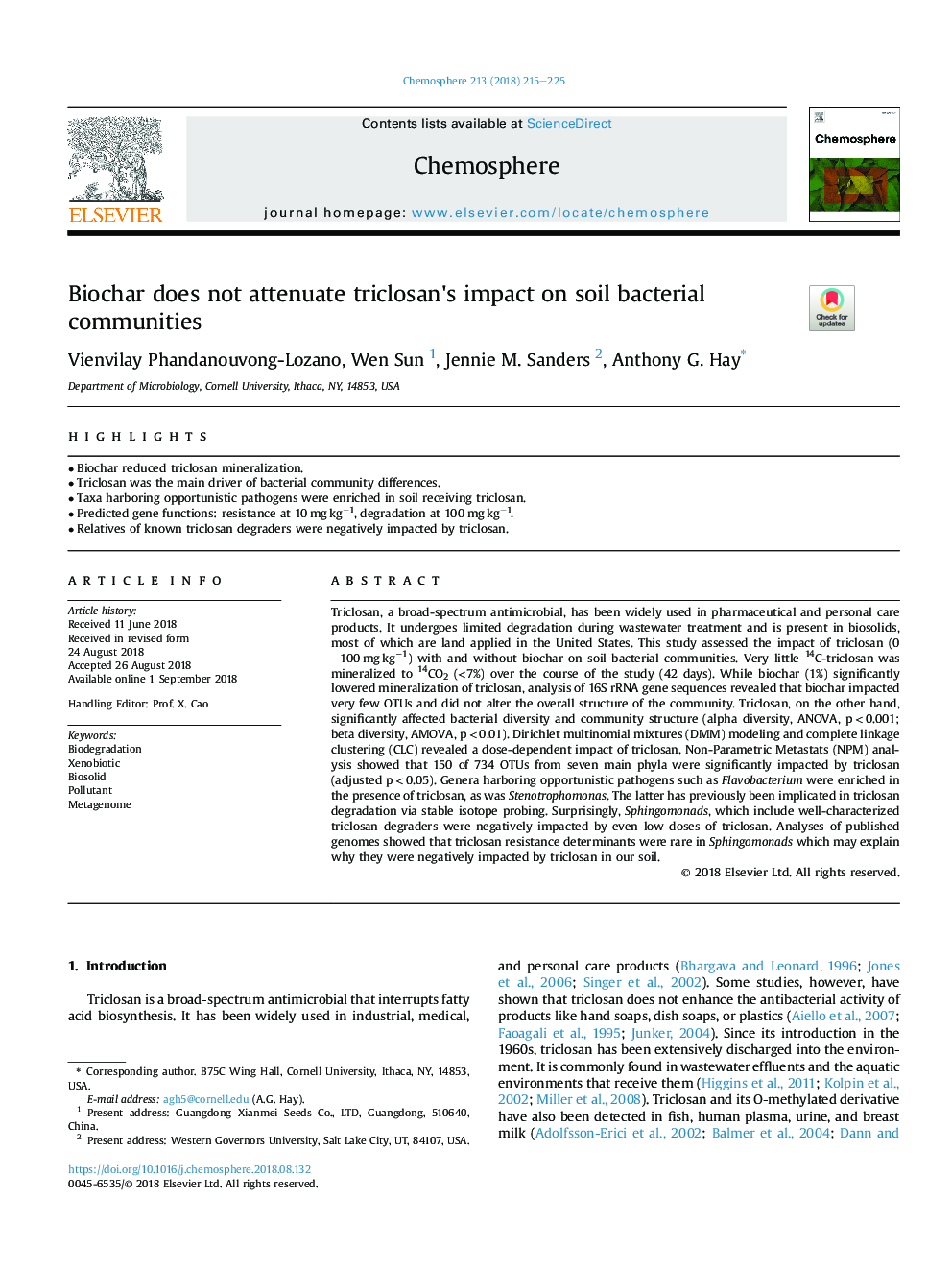| Article ID | Journal | Published Year | Pages | File Type |
|---|---|---|---|---|
| 10149466 | Chemosphere | 2018 | 11 Pages |
Abstract
Triclosan, a broad-spectrum antimicrobial, has been widely used in pharmaceutical and personal care products. It undergoes limited degradation during wastewater treatment and is present in biosolids, most of which are land applied in the United States. This study assessed the impact of triclosan (0-100â¯mgâ¯kgâ1) with and without biochar on soil bacterial communities. Very little 14C-triclosan was mineralized to 14CO2 (<7%) over the course of the study (42 days). While biochar (1%) significantly lowered mineralization of triclosan, analysis of 16S rRNA gene sequences revealed that biochar impacted very few OTUs and did not alter the overall structure of the community. Triclosan, on the other hand, significantly affected bacterial diversity and community structure (alpha diversity, ANOVA, pâ¯<â¯0.001; beta diversity, AMOVA, pâ¯<â¯0.01). Dirichlet multinomial mixtures (DMM) modeling and complete linkage clustering (CLC) revealed a dose-dependent impact of triclosan. Non-Parametric Metastats (NPM) analysis showed that 150 of 734 OTUs from seven main phyla were significantly impacted by triclosan (adjusted pâ¯<â¯0.05). Genera harboring opportunistic pathogens such as Flavobacterium were enriched in the presence of triclosan, as was Stenotrophomonas. The latter has previously been implicated in triclosan degradation via stable isotope probing. Surprisingly, Sphingomonads, which include well-characterized triclosan degraders were negatively impacted by even low doses of triclosan. Analyses of published genomes showed that triclosan resistance determinants were rare in Sphingomonads which may explain why they were negatively impacted by triclosan in our soil.
Related Topics
Life Sciences
Environmental Science
Environmental Chemistry
Authors
Vienvilay Phandanouvong-Lozano, Wen Sun, Jennie M. Sanders, Anthony G. Hay,
